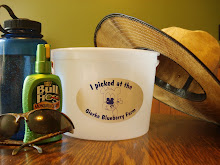Weather Station at the GBbF
Moisture, temperature, and sunlight are critical conditions for growing crops. Sophisticated instrumentation for monitoring these conditions has become economically and technologically accessible for even hobby farmers and gardeners. Internet and cellular technologies allow the instrument readings to be uploaded and accessed in near real time. A stroke of luck has resulted in the GBbF now being host to an Onset Weather Station.
The station records data hourly and uploads via cellular link to a publically available website (https://www.hobolink.com/p/47316a1a1d140ad082139599206946ab). Sound and look fancy? It is, too fancy for this farm, but it worked out as a matter of some convenience, so he says, to University of Cincinnati Geography Professor Ken Hinkel.
Since 2005, Ken has built and maintained a network of weather stations that collect data on precipitation, temperature, wind, sun, moisture, humidity, and atmospheric pressure, in the Western Upper Peninsula along the shore of Lake Superior. His research interests are in the complex influences of large water bodies on local, near-shore climates, something called the “maritime effect.” Ken has a summer cottage on Keweenaw Bay and has been collecting shoreline climate data there for years and has been looking for an upland location nearby for a paired weather station. As luck would have it, we are located the perfect distance upland from his cottage. We had to do some negotiations, because this instrument is research grade, for that is its basic purpose. So Ken had to agree to set it all up. He also had to volunteer pruning a set amount of hours, which he did, but sometimes had to do it in the cold rain to get the hours in in time for the weather station installation. He drives a hard bargain.
The weather station records data, it does not predict the weather, so the data is interesting to pickers but it will not be useful in deciding when to come pick blueberries if weather is a concern. Think of it as an educational tool. Maybe some locals will find the soil temperature and precipitation useful for agricultural purposes. I am going to get a lot of use out of it for the irrigation system I am installing. More on that in the future.
The station measures soil moisture 3 inches beneath the surface using an instrument that monitors changes in a property called the dielectric constant, which varies with the amount of water present. The measurement is converted to an estimate of the water content (volume of water per bulk volume of soil) using “average” soil conditions. We all know there is no such thing as an average soil, so the water content measurement is only an approximation and really one should examine the trends rather than fret about the actual value. All of the other conditions are direct measurements. Soil temperature is also measured at the 3-inch depth. You will notice that the reported units for each variable are in metric (remember, this instrument is for research). I suspect that precipitation will be of interest to many. I am going to use the solar radiation measurements in analyzing my solar-powered pump for the irrigation (to be installed in the next few weeks).
Stations like these are deployed across the country. Michigan State University Extension hosts the Enviro-weather website (enviroweather.msu.edu), which provides links to climate data from across the state and weather-based tools for farmers. More information about Ken’s work in the WUP was recently published in an article co-authored with Fred Nelson and titled, “Spatial and temporal aspects of the lake effect on the southern shore of Lake Superior,” in the journal Theoretical and Applied Climatology (vol. 109, issue no. 3-4, pages 415-428). Unfortunately, Ken and Wendy head up to the North Slope at the start of August for their climate research there (http://northslope.arcticmapping.org/history/history.html), prior to returning to their professor duties at the University of Cincinnati. So you will not have a chance to meet them and discuss climate studies during the berry season. If you are in the neighborhood of the farm in the evening this month or next, you might catch the visiting us around the fire ring, so make sure you stop.






0 Comments:
Post a Comment
<< Home